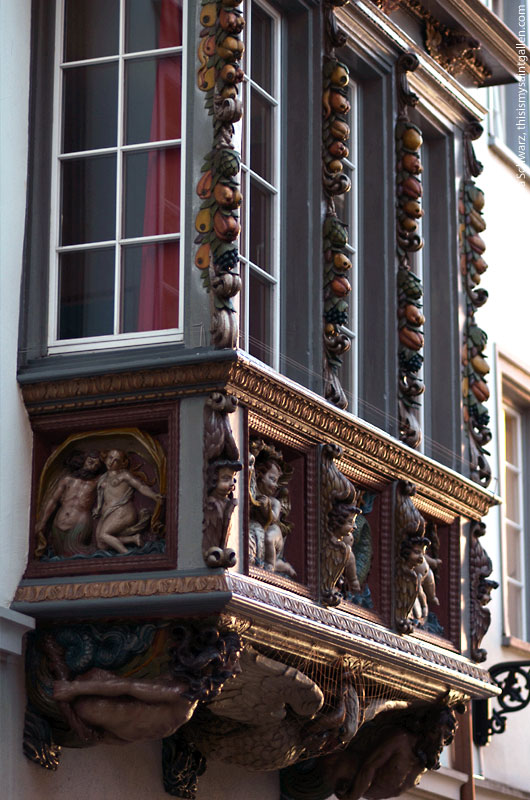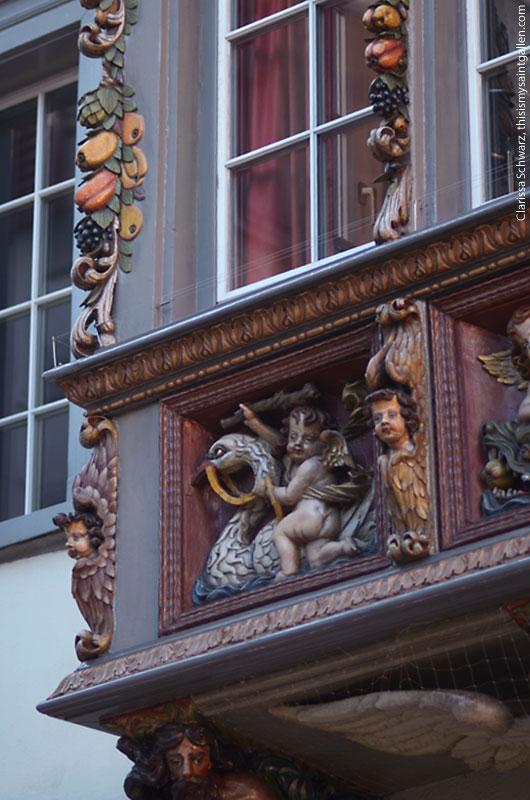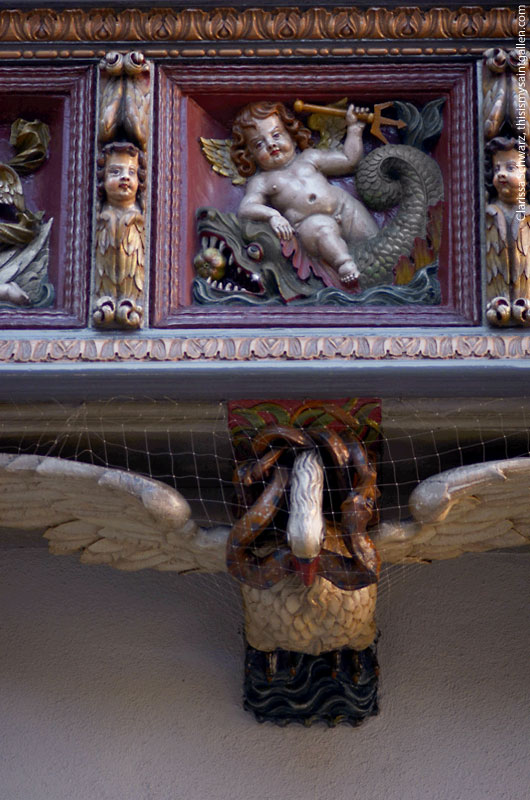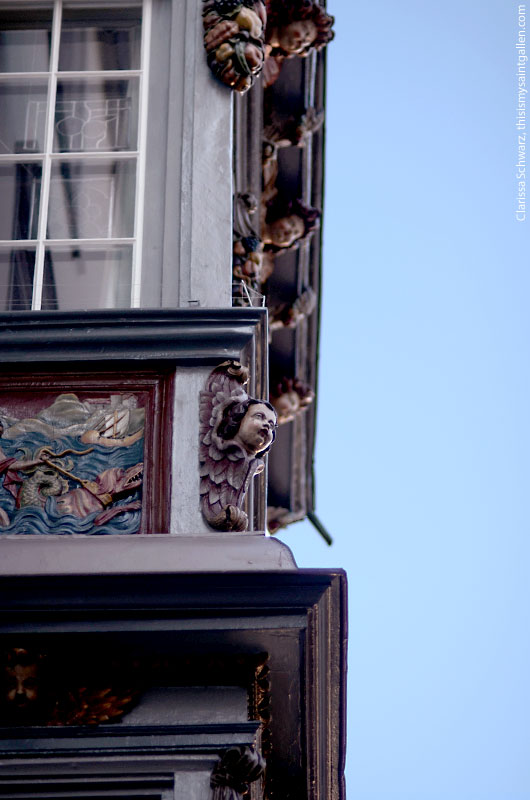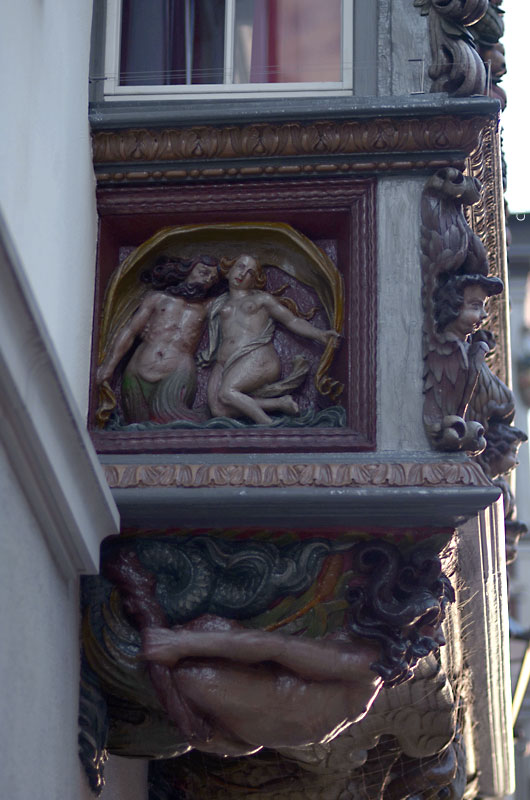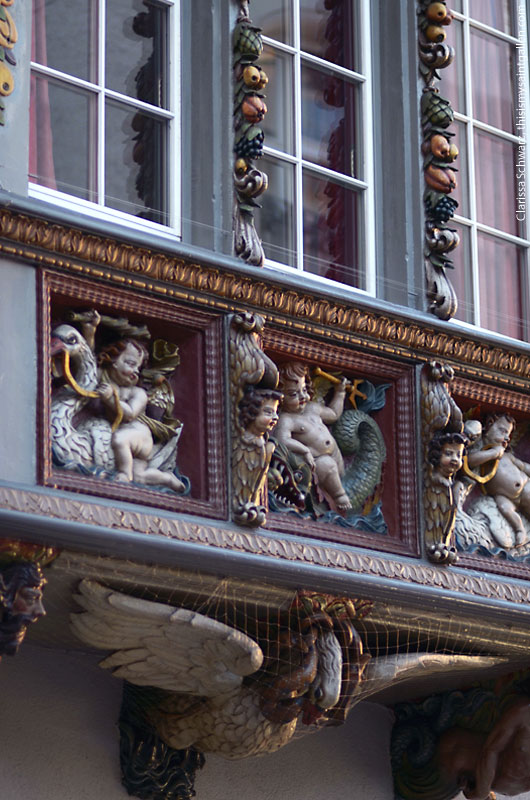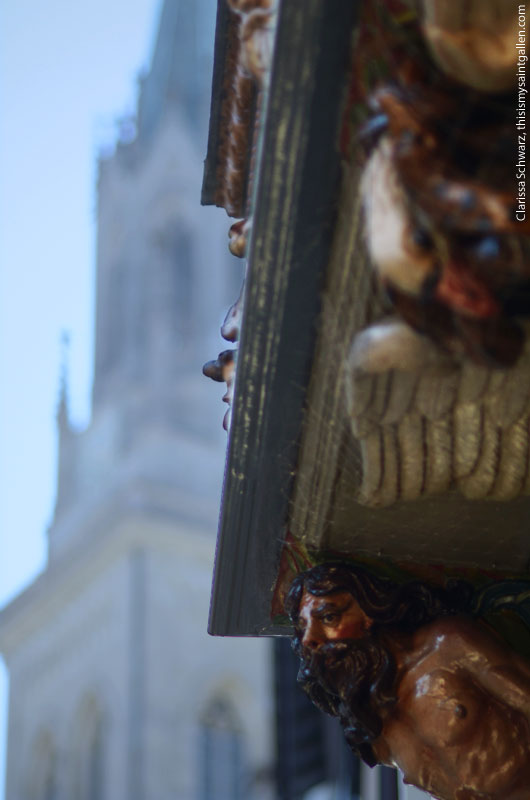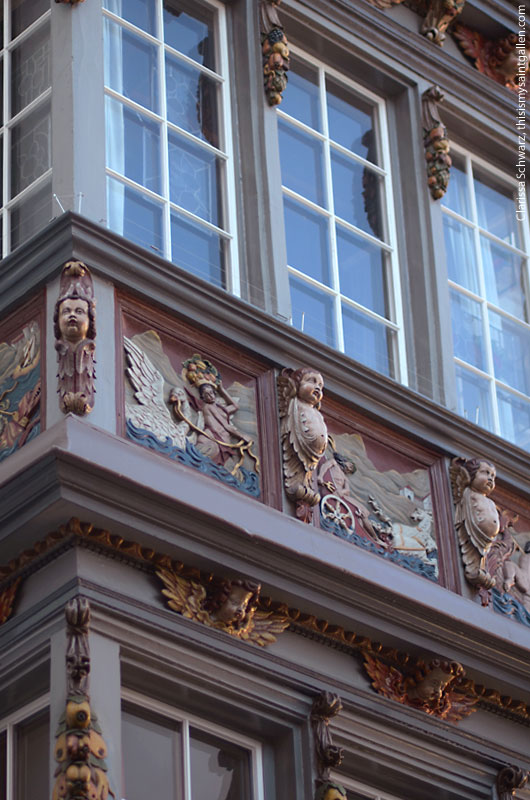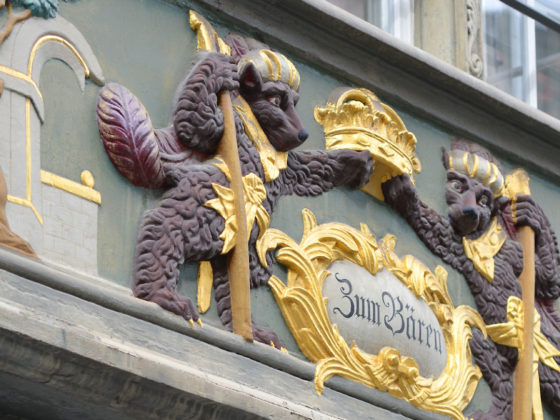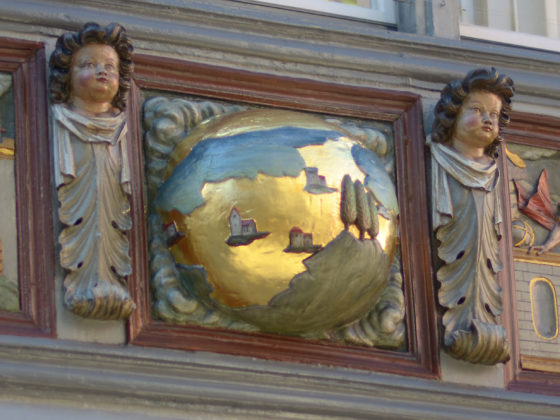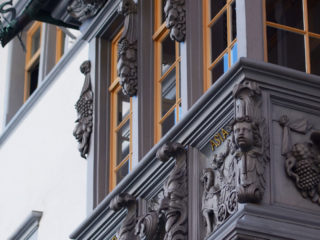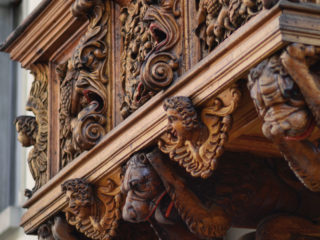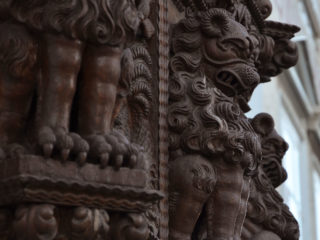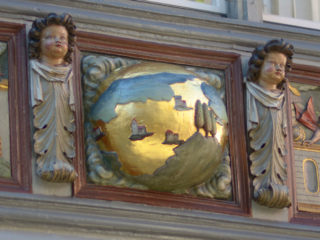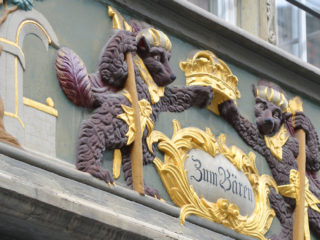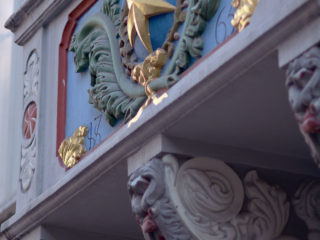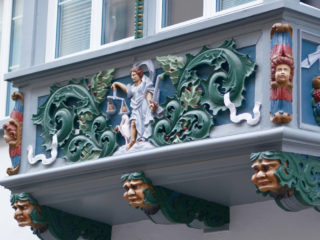»» Kugelgasse 10
Take your loved one by the hand and stroll together to this oriel because this one shows a very special love story! The «Schwanenerker» (Swan) tells a story about the young and beautiful Arethusa and Alpheus, son of the Ocean god.
Marx Friedrich Högger (1655-1731) was the owner of this house and this oriel.
The Oriel shows a swan with spread wide wings in the middle and two snakes in the mouth which biting each other in the tail. On the side are two tritons with big beards (more about tritons ↗). They look like the picture from Bernard Picart «Glaucus turned into a sea god», 1733. If you step back, you recognize carved fruit baskets, aquatic beings from ancient mythology and angels/putti. To protect from pigeons, the swan is covered with a fine-meshed net.
The other representations are dedicate to the sea and its diverse inhabitants. For example, Poseidon on his ocean cart, riding putti or nereids with fruit baskets on their heads. Also one of the scenes from Greek mythology is Heracles overcomes Skylla, the wild sea dragon with the dog face. On the neck band of the sea-creature (Skylla) you can see the initials of the Owner – the letters M and H. As well a nymph rising out of the water, balancing a fruit basket on her head and guiding Neptune’s swan on a leash. You can also see «Arion», «Andromeda», «Alpheios», «Sirenen» and «Jason».
Arethusa and Alpheus
In Greek mythology, Arethusa was a beautiful nymph and companion to the moon goddess, Artemis. She was the goddess of hunting and knowledge. Arethusa looked so beautiful that all men who set eyes upon her ended up desiring her: it was not long before Alpheus, son of the Ocean god, fell in love with her. One day she is bathing in a river when she feels a rumbling beneath her. A voice says it is Alpheus, the river god, and the voice says that Alpheus loves her. But Arethusa wants nothing to do with him and runs away in fear. She fled away from the stream but was chased by Alpheus. After a long chase, she prayed to her goddess Artemis to ask for protection. The goddess hears the prayer and turns Arethusa into a spring of water. When Alpheus saw this he broke literally in tears and became a small River in Sicily.
Schwanenerker
Der Schwanenerker (1690) zeigt einen Schwan mit ausgebreiteten Flügeln und zwei Schlangen im Maul, die sich in den Schwanz beissen. An der Seite sind zwei Meeresgötter (Tritonen) mit langen Bärten. Die Darstellungen sind dem Meer und seinen vielfältigen Bewohnern gewidmet. Links um die Ecke sieht man eine Szene aus der griechischen Mythologie. Herakles der den gefürchteten Seedrachen Skylla besiegt. Auf dem Halsband der Meereskreatur sind die Initialen des damaligen Besitzers M und H (Marx Högger) abgebildet. Vorne links sieht man eine Nymphe im Wasser, die einen Obstkorb auf ihrem Kopf balanciert und Neptuns Schwan an der Leine führt. In der Mitte ist Poseidon mit dem Dreizack in der Hand. Er fährt auf seinem von Pferden gezogenen Wagen über das Meer. Rechts sieht man Arion von Lesbos der von einem Delfin wohlbehalten ans Land gebracht wird. Rechts um die Ecke bläst der wilde Triton in ein Muschelhorn.
Unten sieht man unter anderem reitende Putten auf Schwänen. Doch der Schwanenerker erzählt auch die Geschichte über Alpheus und die schöne Arethusa. In der griechischen Mythologie war Arethusa die Schönste unter den Nymphen und Gefährtin der Mondgöttin Artemis. Arethusa sah so schön aus, dass alle Männer die sie sahen, sie begehrten. Es dauerte nicht lange, bis Alpheus, Sohn des Meeresgottes, sich in sie verliebte und ihr schmachtend nachstellte. Eines Tages badete sie im Fluss und hörte den Flussgott kommen, der sie entführen wollte. Aber Arethusa wollte nichts mit ihm zu tun haben und floh nackt und ängstlich zum Ufer. Doch Alpheus hörte nicht auf sie über die Berge und Wälder zu verfolgen. Als sie müde wurde, verging sie durch Schweiss vollständig in Wasser. Als Alpheus das sah, verwandelte er sich ebenfalls in Wasser, um sich mit ihr zu vereinigen.
In einigen Büchern steht, dass dies nicht Alpheus und Arethusa sind, sondern einfach eine Nereide, die ihren Schleier im Halbkreis schwingt. Mir persönlich gefällt aber die Geschichte mit Alpheus und Arethusa besser.
